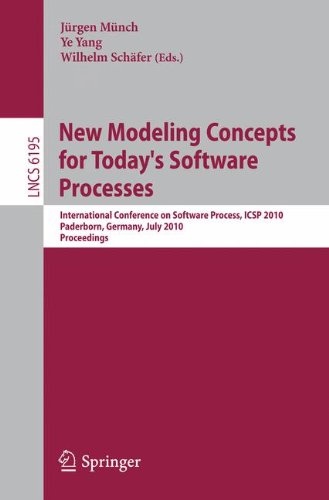

Most ebook files are in PDF format, so you can easily read them using various software such as Foxit Reader or directly on the Google Chrome browser.
Some ebook files are released by publishers in other formats such as .awz, .mobi, .epub, .fb2, etc. You may need to install specific software to read these formats on mobile/PC, such as Calibre.
Please read the tutorial at this link: https://ebookbell.com/faq
We offer FREE conversion to the popular formats you request; however, this may take some time. Therefore, right after payment, please email us, and we will try to provide the service as quickly as possible.
For some exceptional file formats or broken links (if any), please refrain from opening any disputes. Instead, email us first, and we will try to assist within a maximum of 6 hours.
EbookBell Team

4.0
16 reviews
ISBN 10: 3642143466
ISBN 13: 978-3642143465
Author: Jürgen Münch, Ye Yang, Wilhelm Schäfer
2010 was the first time that the International Conference on Software Process was held autonomously and not co-located with a larger conference. This was a special challenge and we are glad that the conference gained a lot of attention, a significant number of contributions and many highly interested participants from industry and academia. This volume contains the papers presented at ICSP 2010 held in Paderborn, G- many, during July 8-9, 2010. ICSP 2010 was the fourth conference of the ICSP series. The conference provided a forum for researchers and industrial practitioners to - change new research results, experiences, and findings in the area of software and system process modeling and management. The increasing distribution of development activities, new development paradigms such as cloud computing, new classes of systems such as cyber-physical systems, and short technology cycles are currently driving forces for the software domain. They require appropriate answers with respect to process models and management, suitable modeling concepts, and an understanding of the effects of the processes in specific environments and domains. Many papers in the proceedings address these issues.
new modern concepts
new concepts.com
new modern concepts iowa falls ia
a new model
a model of the new product
Tags: Jürgen Münch, Ye Yang, Wilhelm Schäfer, New Modeling, Software Processes